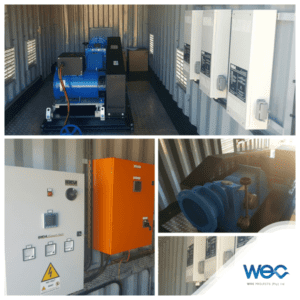The KwaMadiba scheme forms part of the Department of Science & Technology’s (DST) Innovative Partnership for Rural Development (IPRD) initiative which is piloting innovative technology solutions to enhance service delivery. This initiative involves the prioritised needs of 23 district municipalities.
The DST has contracted two implementation agencies to test a range of water, sanitation and small hydropower solutions at municipal demonstrations sites. One these agencies, the Water Research Commission (WRC), in turn contracted the Water Division at the Civil Engineering Department of the University of Pretoria to conduct research within the IPRD programme on the implementation of small scale hydropower solutions for rural electrification. One of the study areas is the OR Tambo District Municipality in the Eastern Cape where it was determined that the Thina Falls within the Thina river system was feasible for a small scale hydropower development. The SSHP scheme has minimal impact on the environment as only a very small amount of water is diverted towards the turbine and the use of the water is not for consumption purposes. In addition to the full time job created for one community member, a substantial 30 temporary jobs have been created. “Electricity will enable the green shoots of economic development quite literally as villagers begin irrigating their crops with an electric pump and the local authority is provided with its first reliable revenue stream,” says Marco van Dijk of the University of Pretoria’s Civil Engineering Department.
A new small-scale hydropower (SSHP) scheme will soon provide electricity to 39 households in the KwaMadiba settlement in the rural Eastern Cape.
Rural electrification has the potential to dramatically improve the standard of living in South Africa, making it a top development priority for the public, private and educational sectors.
The hydropower plant, located on the Thina Falls on the Thina River, is powered by a Banki turbine that makes up the core of the SSHP plant. The Banki turbine was sourced in Italy and installed by WEC Projects, a leading South African engineering, procurement and construction contractor in the water and wastewater industry.
In line with government’s commitment to exploring alternative technologies to achieve universal access to energy, the KwaMadiba SSHP will be commissioned this month during National Water Week.








